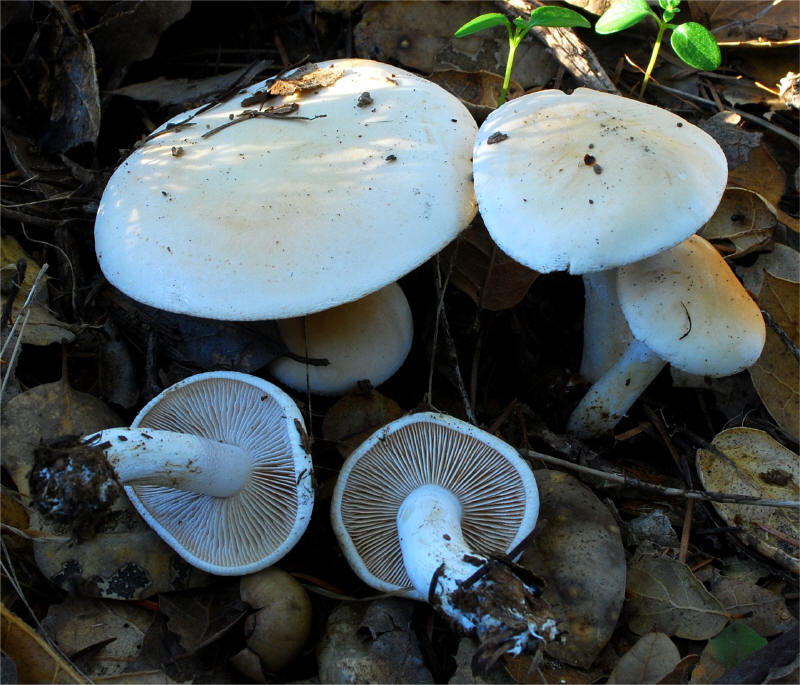 |
| The name crustuliniforme
seems to be the most widely applied one in genus Hebeloma.
Judging by that it appears to be a very cosmopolitan species in the Northern
Hemisphere. In Western North America were the Genus is poorly studied
frequently this is the only name applied to a broader range off collections.
Whether Hebeloma crustuliniforme s.s. even exists in Western
North America will require a separate study. |
_small.JPG) 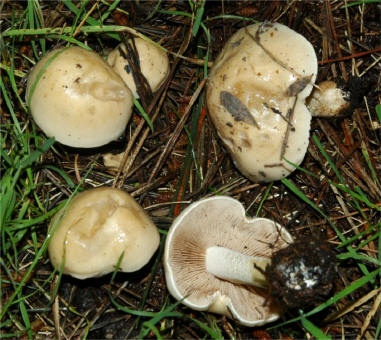 |
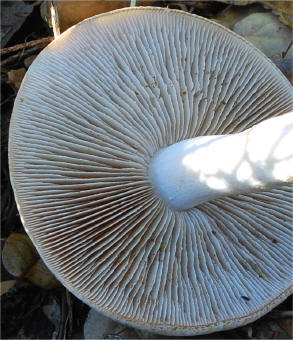 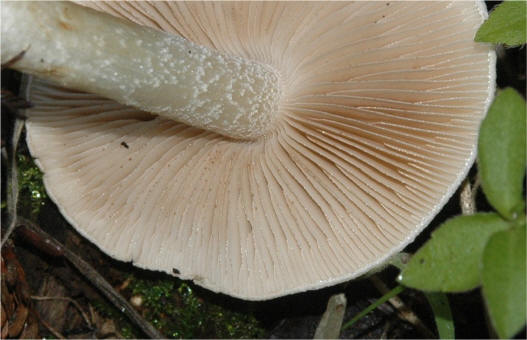
One of the distinguishing features of Hebeloma crustuliniforme are
the brownish water droplets on the serrated gills. The brown color is due to
the spore deposit in the water. |
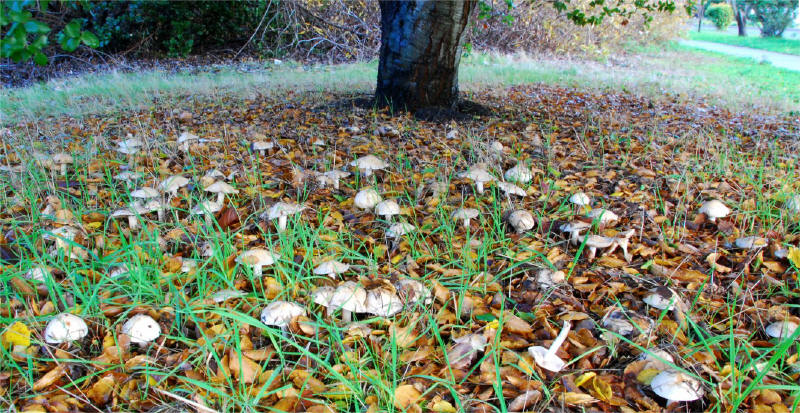
Frequently there are massive fruiting in California under both Oaks and
Pines. |



